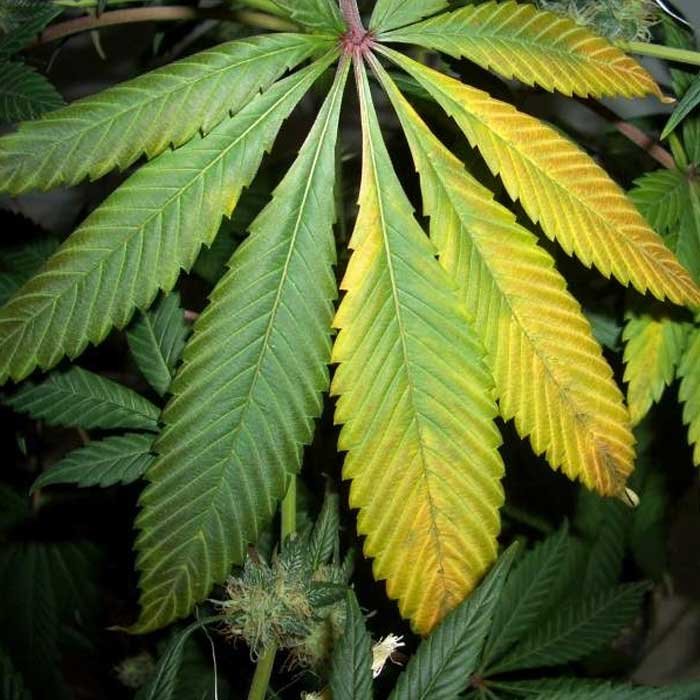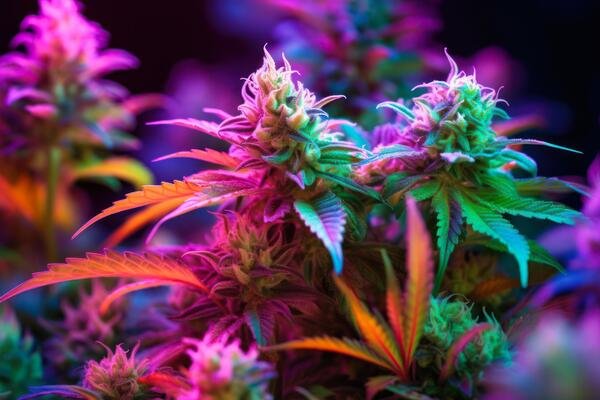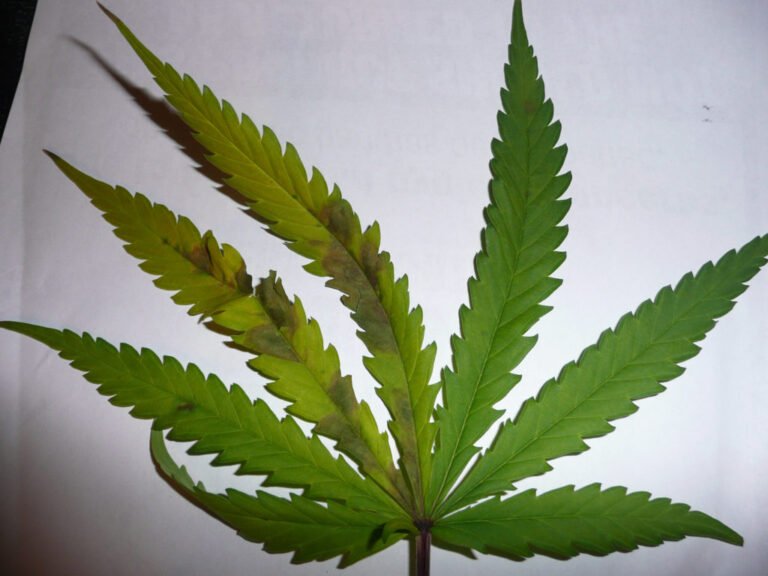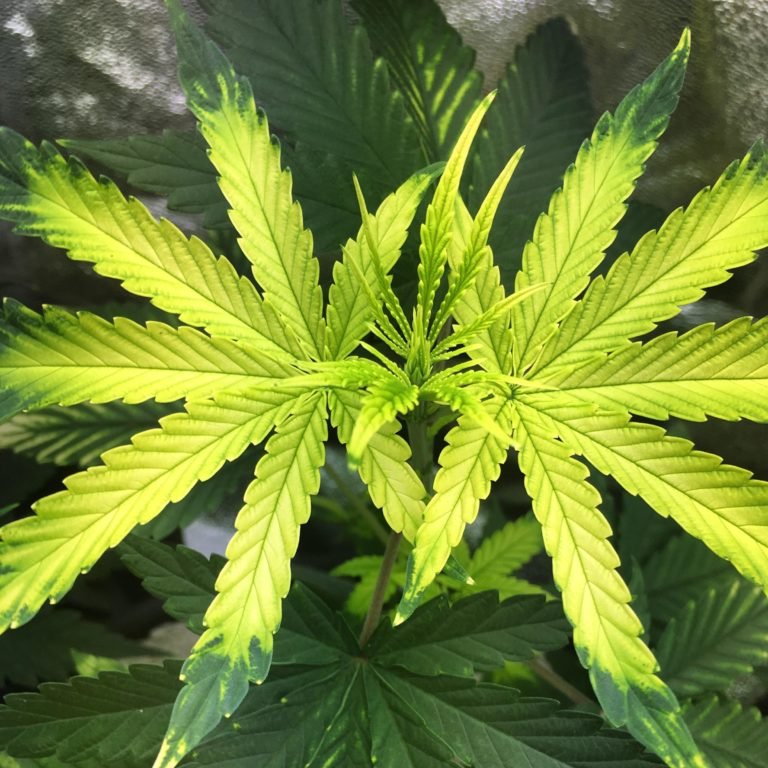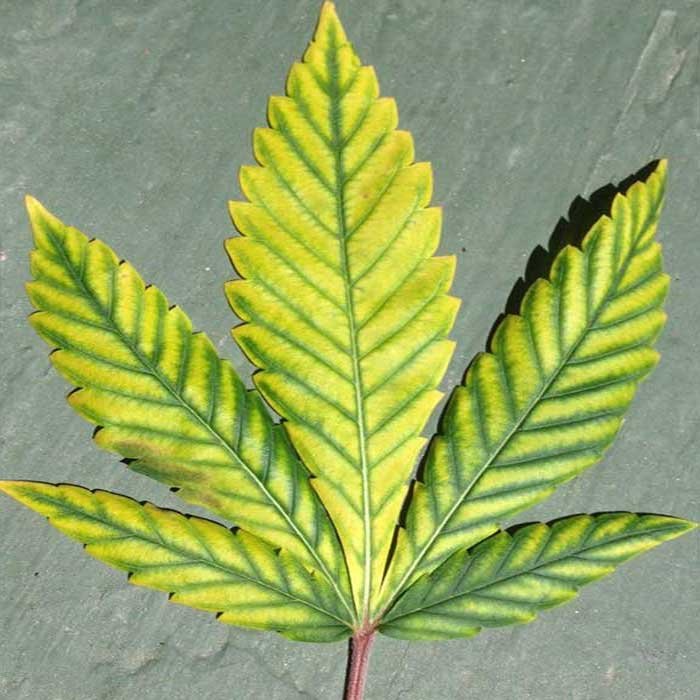Potassium stands out as a vital conductor that orchestrates numerous fundamental processes in the cultivation of cannabis plants.

Potassium Cycle
Potassium (K) is an elemnt found in the mineral form in the soil. The presence of K varies depending on the type of soil we grow our crops in. Clay soil are among the richest in this macronutrient, they contain up to 3%.
One way in which K is self-regenerated in the soil is through animal excrement. The nutrient returns to the ground to be processed again by soil microbial life.
In regions where rainfall constantly occurs, the substrate will not retain K properly, so it will not be found in the substrate in the quantities that the plant requires.
K is an element that is very easy to carry away with large amounts of water, so we must add Potassium in the form of sulfate to reintroduce this element into the substrate and thus make it avaible to plants.

Functions of K in Marijuana
Potassium is one of the most important nutrients for the plants, present in all types of fertilizers and additives such as PK supplements. Although it’s not widely present in plant tissues, it perfoms important functions sush as catalyzinf many metabolic processes like:
- Intervene in photosynthesis, promoting carbohydrate synthesis.
- Intervene in the synthesis of proteins and amino acids, which come from Nitrogen (N) in the form of ammonium so the interaction NK is vital for the metabolic processes of cannabis plants.
- Increases plant resistance during periods of drought.
- Increases the consistency and hardness of plant tissues.
- Along with Phosphorus (P), it increases the hardness and resistance of the root system.
- Increases frost resistance by acting as an antifreeze agent within the plant’s sap.
- Increases flower weight, density, and volume.

Onset of K deficiency in cannabis
Potassium deficiency in cannabis plants
In the case of a K deficiency, plants will exhibit visible symptoms that will help us detect this condition. Since Potassium is a mobile element, when the plant needs it, K will move from the older leaves to the younger ones (to the most metabolically active part of the plant).
We must prevent a lack of this nutrient because a visible and advanced deficiency means that the plant’s production will be reduced.
In the case you already have a deficiency of K, you should add more Potassium-rich fertilizer, whether organic or mineral. Organic one is absorbed more slowly than mineral one. Mineral fertilizer will quickly fill the deficiency and allow you to harvest decent buds. If the deficiency occurs prematurely, you can simply increase the dosage of your favourite fertilizer.

Middle phase of Potassium deficiency
K deficiency symptoms:
- Tips of the leafs turn yellow. This color spreads toward the center ending at the base of the leaf.
- The plants are not vigorous and they have less resistence to disease.
- The stems are weak and bend easily.
- Final bud production is severely reduced.
- Excess Calcium (Ca) can impair the plant’s ability to absorb K, creating a deficiency.

Advanced stage of Potassium deficiency
K Excess
K Excess in plants can manifest itself through various symptoms. Below are some common signs of this.
Symptoms of K excess:
- Marginal chlorosis: leafs may develop chlorosis, a generalized yellowing with a dark green border.
- Leaf necrosis: brown spots or necrotic (dead) areas may appear on leafs, especially at the edges.
- Decreased uptake of other nutrient: K excess can interfere with the uptake of other essential nutrients such as Magnesium (Mg), Zinc (Zn), Iron (Fe) and Calcium (Ca) leading to deficiencies in this elements.
- Reduced growth: K is necessary for plant growth. As K excess inhibit the uptake of otrer nutrients, overall growth is negatively affected.
- Reduced cold tolerance: cannabis plants with Potassium excess may become more susceptible to cold damage.
- Nutritional imbalances: K excess can lead to nutritional imbalances as it can displace other cations (positive ions) in plant uptake.
Keep in mind that symptoms may vary depending on the variety and specific growing conditions. Carefully monitoring plant health and adjusting fertilizer rates as needed is the way to prevent problems associated with K excess.
To treat the excess a root flush should be performed with at leat three times de pot’s capacity.



